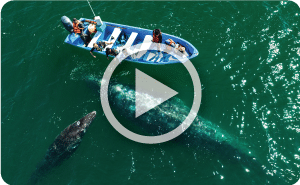Very, very exciting news on our end is the enactment of new legislation in Mexico designed to protect shark populations. I couldn’t be more ecstatic about the news. Is my pleasure inform you that the “Mexican Official Standard Rule NOM-029-PESC-2006, Responsible shark and ray fisheries” was published last February 14, 2007 in the Federal Gazette of the Mexican Government. This set of regulations will improve the management of all shark fisheries (artisanal and offshore) in Mexico and will promote the conservation of shark stocks and vulnerable shark and ray species.
Between the most important measures are: the complete shark finning ban, the extension of the moratorium of new shark commercial permits, the complete ban of shark gillnets in median size commercial boats (10.5 – 27m length) in all territorial waters in 2.5 years, the implementation of an official observer program on all shark vessels, the obligatory participation of all shark boats in the tracking satellite program of CONAPESCA, the improving of the statistical fishery collecting data system, the implementation of limits for shark fishery grounds (in the West coast of the Baja Peninsula, the median size shark commercial boats should operate outside of the 20nm, artisanal outside of 10 nm), and the most beautiful contribution of all, the total protection of the great white, whale, basking, and saw sharks and the group of manta rays (all species of genus Mobula). No one can catch any individual of this species any longer.
So our precious great white sharks of Guadalupe Island should finally have the support of the Fisheries Law. All white sharks caught alive in commercial shark vessels operations should be released ASAP, and the ones already dead should be reported and delivered to the authorities. The authority onboard those boats will be the official CONAPESCA observers. This program will be mandatory and permanent and will do so much to protect shark populations. Since last year the pilot observer program has been conducted in Puerto Peñasco, Ensenada, Mazatlán and Manzanillo, where most of the shark fleet is concentrated. Currently, the program is voluntary and temporary, but after May 15, it will be obligatory and permanent.
That is what the Mexican shark biologists have been doing in Mexico in the last years, including our last effort in trying to understand the seasonal migratory pattern of the great white sharks in Guadalupe Island. This is going to be a good year for everyone and their activities related to sharks, and hopefully, we will see great results from this effort to protect shark populations. Collaboration is the key strategy to achieve success in the conservation of these beautiful animals, here and everywhere. The elaboration, discussion, and agreement of this law took almost 10 years.
In other news, the Nautilus Explorer is back in Cabo San Lucas, our guests have disembarked, and we are bustling to get the ship turned around for our next trip. Cabo San Lucas is chaotic with the start of “spring breakers,” and I will be completely content to stay onboard tonight and have a quiet drink and enjoy our hot tub. Captain Dave tells me that the return crossing from San Benedicto Island was a 7/10 in terms of roughness. They started out with a bumpy 6 – 8ft sea, but it moderated after 12 hours, and the rest of the trip was quite pleasant.
–Captain Mike







